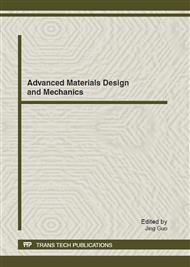p.712
p.718
p.723
p.729
p.733
p.737
p.741
p.745
p.749
Predict Hypotension Events during Spinal Anesthesia Based on Particle Swarm Optimization Neural Networks
Abstract:
Neural network model based on particle swarm optimization (PSO) was established for predicting hypotension during general anesthesia. The BP neural network parameters optimized by pso, and learning samples are trained and modeled by BP neural network with optimal parameters. The simulation experiment is carried out with MATLAB. The result indicated that the model forecasting results are close with the actual results and meet the accuracy requirement to General Anesthesia.
Info:
Periodical:
Pages:
733-736
Citation:
Online since:
September 2012
Authors:
Price:
Сopyright:
© 2012 Trans Tech Publications Ltd. All Rights Reserved
Share:
Citation:


